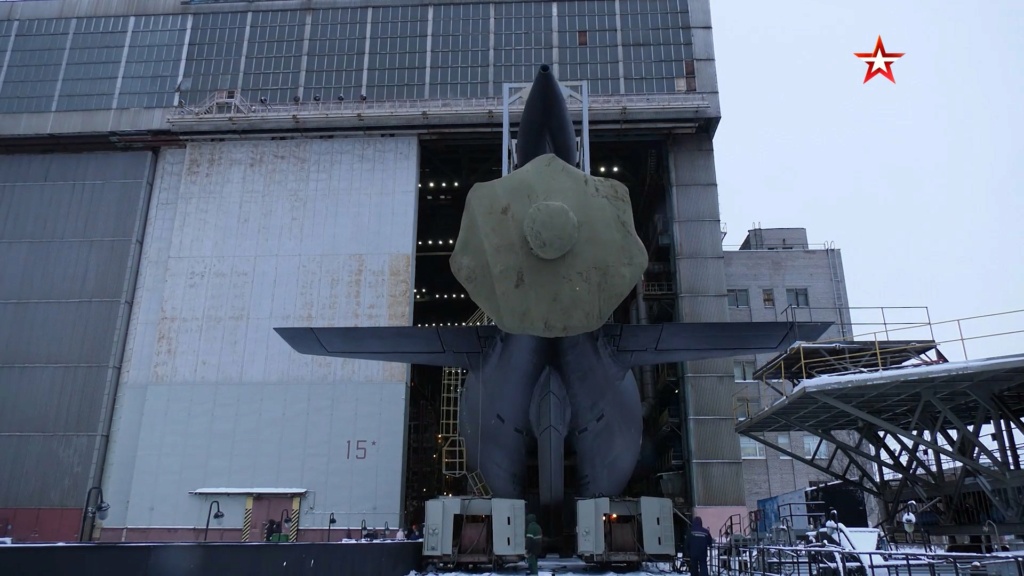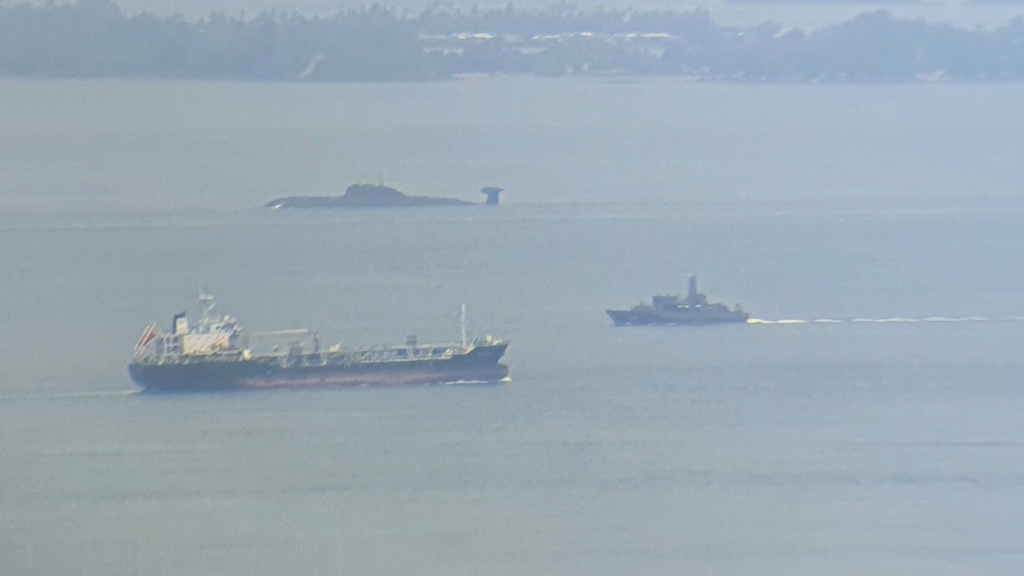Beastly grin. Submarines of the far sea zone are returning to service
LITOVKIN Dmitry
Military observer
Dmitry Litovkin - about why Project 971 submarines are called the perfect naval weapon
Already in 2023, Russian sailors will be able to return to permanent combat duty in the Atlantic and Pacific Ocean. Project 971 multipurpose nuclear submarines of the "Pike" type, or, as they are also called in the West, "Shark", will take on escort ships, and will also monitor the coasts of the United States and Britain. Earlier, the next ship of the "animal" series "Tiger" got up for repair and modernization at the "Nerpa" shipyard near Murmansk. Its return to service will usher in a new era of submarine confrontation between fleets. To date, these are the quietest and most dangerous submarines that really pose a threat to western naval domination.
Silently
"Pike" - extremely successful and the first Soviet submarine, got rid of the contemptuous nickname "roaring cow". This is what Western sailors called all our nuclear submarines that went on alert in the North Atlantic from the 1960s to the early 1980s. However, even before Shchuka, Project 671 ships were built, as well as the world's only fully titanium Project 945 submarines of the Barracuda type. All of them, in general, have already demonstrated a technological breakthrough in the submarine shipbuilding of the USSR, which the Americans and the British slept because of their arrogance. An insight came in 1986, when the head nuclear submarine of the 971st project left the stocks of the Severodvinsk machine-building enterprise "Sevmash" (part of the United Shipbuilding Corporation, USC). It differed from its predecessors in new on-board equipment,weapons systems. It was also cheaper to manufacture.
Unlike the Barracuda, the Pike was made from ordinary ship rental. But most importantly, it has become practically silent in the ocean depths. This was achieved through the use of special cushion cushions for all equipment and mechanisms of the ship. As a result, at speeds of several knots, the ship literally disappeared into the ocean abyss. Experts associate the breakthrough in noiselessness with the scandal that erupted in the West in the early 1980s, when it turned out that the USSR was able to purchase unique high-precision machines from Toshiba Corporation in Japan through third countries.
Thanks to them, the production of shaft lines and propellers has reached a completely different technological level. In response, the Japanese received sanctions from the US State Department for their inability to trade. But be that as it may, the deed was done. "Sharks" disappeared into the ocean depths. The general designer of the project, laureate of the State Prize of Russia, Yuri Farafontov, recalls how, during the tests of the first ship, boats of foreign countries tried to track down ours in order to determine its characteristics. However, the means of searching for the Soviet submarine immediately detected intruders without giving themselves away.
Habitat
New boats have repeatedly baffled the navies of NATO countries. In 1987, the Pikes filmed the infrastructure of one of the most secret US naval bases on the country's east coast through periscopes. Then, in 1996, in February, another curiosity happened. During a NATO naval exercise in the Hebrides region, the Russian "Shark" surfaced in the very center of a warrant of NATO ships practicing the fight against an enemy submarine. The ship issued an SOS signal. It was caused by an acute attack of appendicitis in one of the sailors. It was risky to operate it in ship conditions, and the ship's commander made an unprecedented decision by the standards of the recently ended Cold War: to surface and ask for help from once - and for submariners to this day - potential enemies for help.
The British, using a helicopter, evacuated the sailor and transported him to one of the hospitals. After that, the boat sank again and left. For NATO members, this was another shock: they looked for it - they did not find it, it appeared and disappeared again. And the worst thing in all this is that if it were not for the times of "detente", the Russian ship could not only quietly follow, but at any moment sink the entire naval group training to look for enemy submarines.
Well, then, as they say, more. In the summer of 1996, the Ohio-class USS Tennessee strategic missile submarine discovered that Shark was escorting it near US territorial waters. For American submariners, contacts with Russian submarines are not new, but the fact that the enemy got so close to the American shores came as a complete surprise to them. In 2012, two Project 971 submarines at once were discovered in a 200-mile zone near the east coast of Canada and the United States. But, having begun the persecution of the Russians, both of them quickly missed them.
According to the then Minister of Defense of Canada Peter McKay, one of the ships headed towards the Canadian coast, the second was lost by the Americans: either it went to Cuba, or somewhere else. As it turned out later, he had been in the Gulf of Mexico for a month. Later, the American edition of The Washington Free Beacon, citing the Navy, only stated that "the Russians were at least two months off the coast of the United States, posing a real threat not only to warships, but also to coastal facilities, and no one could neutralize them."
In 2015, information appeared that allegedly two "Sharks" off the British Isles forced the American aircraft carrier USS Theodore Roosevelt to retreat. As a result, the cornered sea giant disappeared into one of the bases of the Royal Navy. The British press wrote that the visit was inconsistent. Recently, practically nothing is known about such high-profile campaigns. On the one hand, "detente", and with it "freedom of speech" in the Western press ended, on the other, our boats somehow quietly nailed to the piers in their home bases. Currently, the 24th - "animal" by the names of submarines - divisions of the Northern Fleet's submarine forces includes Project 971 nuclear submarines "Panther", "Vepr" and "Gepard".
In the image and likeness
It is not only the low acoustic signature that makes the Shark an ideal weapon for submarine warfare. For its time, it was possible to install four 650-mm and four 533-mm torpedo tubes with a large supply of torpedoes and anti-submarine guided missiles "Waterfall" inside its strong hull. In addition to them, the ship had 28 long-range cruise missiles RK-55 "Granat" in ammunition. The machine was created in the early 70s of the last century in the Dubnin MKB "Raduga" as an analogue of the American BGM-109 Tomahawk rocket.
"Granat" can carry both nuclear and conventional warheads. This is the first missile of the Soviet and Russian fleet, which could be used both from under water and on the surface. Its only and main drawback was the guidance system. Due to the lack of a sufficient constellation of satellites, she flew on digital maps of the area embedded in her computer complex. And the latter could be inaccurate.
The Granat missiles were written off. But their work did not die. On September 14, 2017, two Project 636 submarines of the Varshavyanka type B-268 Veliky Novgorod and B-271 Kolpino from the eastern Mediterranean Sea struck with Kalibr high-precision cruise missiles at the targets of the terrorist organization ISIS, which is banned in our country. Then the targets were command posts, communication centers, as well as weapons and ammunition depots southeast of the city of Deir ez-Zor. According to the Ministry of Defense, seven missiles were fired at terrorists' targets from a submerged position, the range to targets was from 500 to 670 km. However, as is now known, the rocket is capable of flying a much greater distance, which makes its carrier extremely dangerous.
In fact, this event predetermined the further development of the entire Russian fleet. Today, not a single surface ship is launched that would not carry the Caliber. The same thing happens in submarine building. The boats of the 971 project started modernization. According to the Commander-in-Chief of the Navy Nikolai Evmenov, it is going in parallel with the program for the construction of Project 885 ships of the Yasen type. This means that the "old" submarines are equipped with the same equipment and systems as the most advanced ones. As for the Ash, we can talk about a new hydroacoustic station, a combat control system, electronic suppression equipment, weapons and propellers of a new design.
It is claimed that the updated Tiger-class boats will be able to use underwater drones. And if we take into account the unification of launchers on modern Russian ships, then in the future Shchuki-B will also be able to launch from a submerged position not only long-range Calibers, but also Zircon hypersonic missiles.
Beasts of the North
Until Project 885 ships of the Yasen type appear in combat, the Sharks will be the main striking force of our submarine. In total, five Project 971 nuclear submarines, including two from the Pacific Fleet, are undergoing repair and modernization at the enterprises of the United Shipbuilding Corporation (USC). Earlier it was reported that the nuclear submarine "Leopard" will return to service in 2021, "Tiger" - in 2022, "Wolf" - in 2023. Thus, in 2023, the "animals" will gather almost in full.
The retention of the grouping of these submarines as part of the Navy significantly expands Russia's capabilities to ensure its own security in long-distance sea communications. Until the implementation of the project 855 nuclear submarine construction program, it is they who will bear the main burden of service in ocean theaters, forcing our counterparts to be constantly "suspended". Actually, this is the main task of the submarine fleet in peacetime, while in wartime it is guaranteed to disrupt any transportations along sea communications.
During their service, the ships of the 971 project have repeatedly demonstrated their superiority over the boats of much more modern projects, such as the American Virginia and Seawolf. And with new sonar equipment and weapons on board, they will become even better. As the sailors say, even in the presence of much more modern "Ash" there is no alternative to the "Pike" in the fleet. Project 971 remains the most advanced naval weapon capable of radically influencing the situation on sea communications.
https://tass.ru/opinions/10542211









